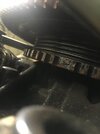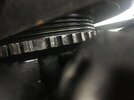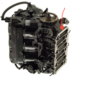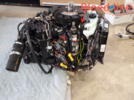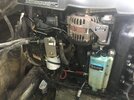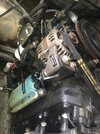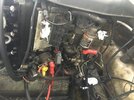Last year we were out on the water only a handful of times. The last day I noticed a little surging in the idle speed. When in neutral with the throttle lever at its lowest setting the idle speed is supposed to be smooth and at a low pleasant rev. Instead it would surge here and there like it was getting too much gas then it would rev back down. This year, I turn the key and it more or less floors it. I turn the key and it gos up to mid throttle and stays there on it’s own at mid revs. I’m not going to say it does right up to full acceleration on its own, but it does go up to mid acceleration/throttle on its own. What can I do to calm my engine down. It doesn’t appear to be a cable/mechanical issue. The little roller appears to be in the right spot. Could it be a choke issue? It thinks it’s on choke all the time now? For whatever reason the engine wants to throttle up to higher revs without me pushing on any levers? Please help.
Last edited:




